Introduction
Knowing the history of Cortina d'Ampezzo means a lot: a better understanding of the life of our ancestors who lived in the mountains, knowing something about the first world war, that took place in our mountains, and know more about the history that has characterized life in the Ampezzo Dolomites, starting from the arrival of the first hunters, around 6000 BC, up to the present day.
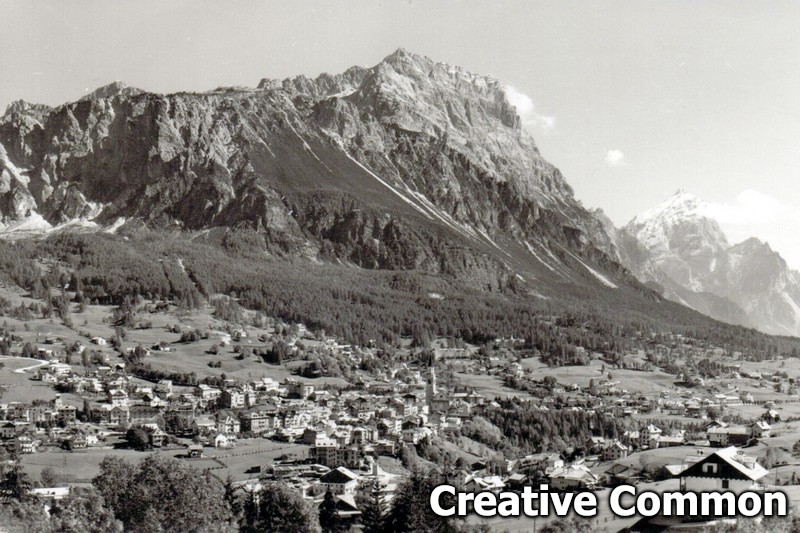
Prehistory of Cortina
First we have to consider that there is no certain date for the birth of Cortina. What we know is that the first traces of activity date back to the Mesolithic era, thanks to the discovery of a mummy. It was a hunter, buried in the locality of Mondeval, which made it possible to date the human presence in these areas to, at least, 6000 BC.
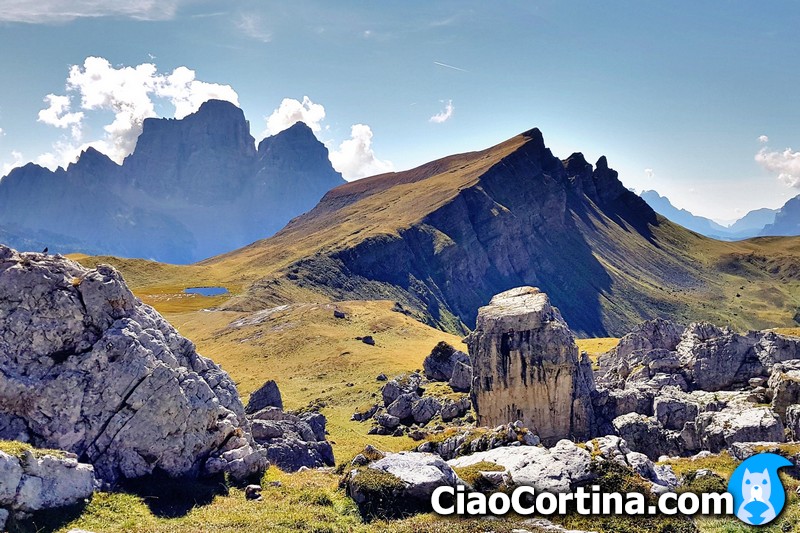
Despite the presence, in the near Cadore, of the Paleovenetians and, subsequently, of the Romans, there is no concrete evidence of any permanent settlement in the Ampezzo valley, at least until the year 1156. This is the date where Ampezzo appears in the first official document. It is a sale between Domenico da Treviso and Giovanni da Cadore.
If you are more interested in the geological history of the Dolomites and their formation, you should read the following page:
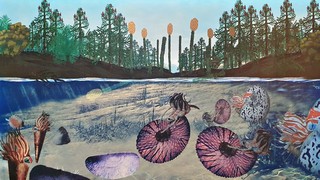

Ancient history of Cortina
Until the year 1510 Cortina was considered part of Cadore, and it was probably frequented in summer, as life in winter would have been very difficult.
For many centuries the town was known only as Ampezzo; the suffix Cortina would not be added until 1900, as we will see later in the article.
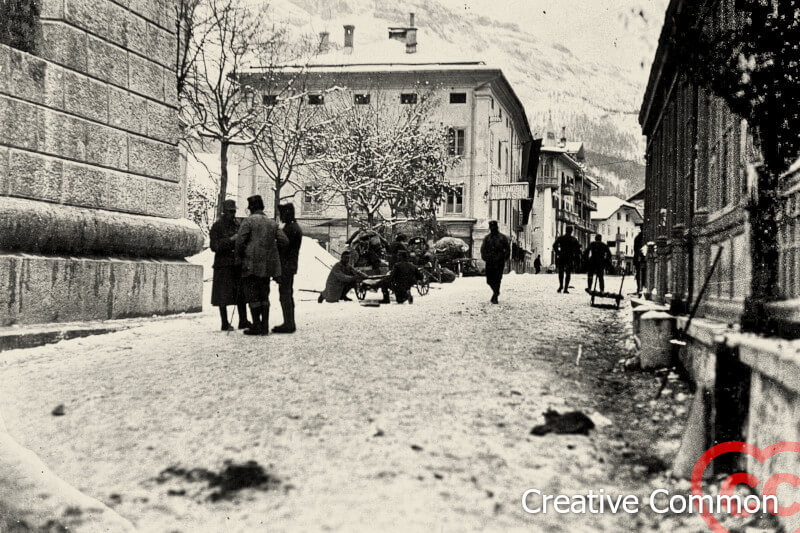
Until the 15th century, the inhabitants of the territories of Cadore and Ampezzo lived in a state of relative peace, passing under the rule of Aquileia, Tyrol, and Aquileia again.
... the equality of all the people and equal rights between men and women...
During this historical period the Cadore Statutes were drafted, from which the statute of the "Regole" of Ampezzo was born. The Statute decreed the equality of all the people before the laws, did not recognize any noble title to its own citizens, promoted equal rights between men and women, exempted from military conscription and reduced the power of the church.
These statutes were extremely modern for the time and, in the future, were always reconfirmed by those who ruled over these lands.
In 1412 the Republic of Venice decided to conquer the territories of Cadore and Ampezzo, taking them away from the Patriarchate of Aquileia, which was part of the Holy Roman Empire.
... the emperor Maximilian conquered the Fortress of Podestagno...
For many years the empire asked for the resolution of this dispute, which took place a century later, when the emperor Maximilian of Habsburg conquered the Fortress of "Podestagno," also known as "Botestagno."
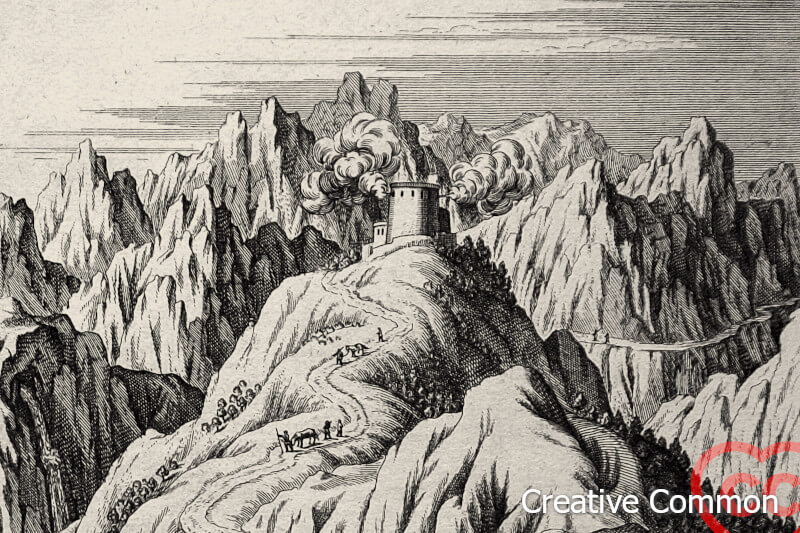
Maximilian asked for the submission of the Ampezzo citizens guaranteeing, in exchange, the maintenance of all privileges, including those contemplated in the Cadore Statutes.
... the separation of these territories created many difficulties in future relations...
Ampezzo accepted, and it was merged with the imperial domains, while Cadore remained in the hands of Venice. The separation of these territories created many difficulties in future relations between the two towns. For centuries there was bickering, but always governed by a discreet mutual respect.
Despite a few fights and beatings, there have never been serious cases of misunderstanding; in fact, no deaths have ever occurred.
Modern history of Cortina
For almost three centuries Cortina's history continued peacefully under the reign of Austria. Cortina had an enviable autonomy and a fair amount of wealth, thanks to the timber trade. This peace lasted until the arrival of Napoleon's army, which conquered Cortina and Toblach in 1809, aggregating them back to Cadore.

This situation did not last long. Only a couple of years later, with the fall of Napoleon, the Habsburg Empire succeeded in annexing all the territories that had belonged to the fallen Republic of Venice, including Cortina.
... the arrival of tourism led the town to be recognized as the Pearl of the Dolomites...
Towards the end of the 1800 the beginning of tourism made it possible to transform a mountain town into the locality we know today. The arrival of the first hikers brought the town to be internationally recognized as one of the most beautiful places in the Alps, earning the title of Pearl of the Dolomites.
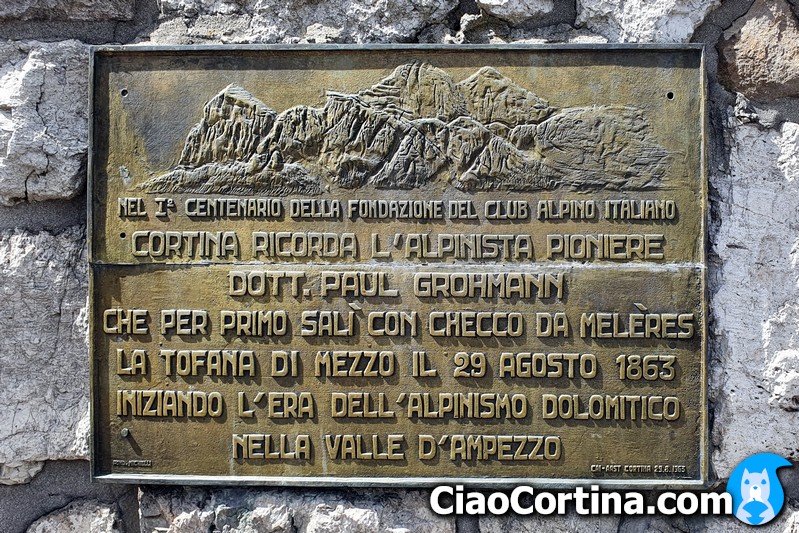
The arrival of tourism also brought a fair amount of wealth, which allowed to raise some of the most distinctive buildings, most of them can still be admired today. First of all the bell tower, erected between 1852 and 1858. If you want to know more about the bell tower of Cortina, we invite you read the page we wrote on the subject, you can find it below:

Cortina's success seemed unstoppable, but the outbreak of World War I, in 1914, brought a terrible trench warfare to be fought on these lands.
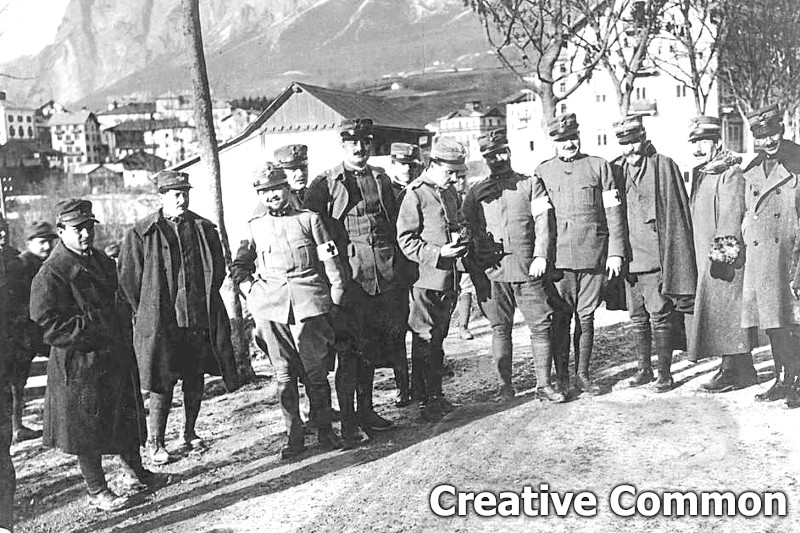
The fighting ended in 1918, with the defeat of the Austrians at the Battle of Vittorio Veneto. It led to the annexation of Cortina to the Kingdom of Italy, initially under the province of Trento.
... Its name was changed from Ampezzo to Cortina d'Ampezzo...
On 21 January 1923 the town was assigned to the province of Belluno, and its name was changed from Ampezzo to Cortina d'Ampezzo.
With the arrival of fascism Cortina experienced a strong return to tourism, but this cost it much of its identity. Many of the highest fascist hierarchies liked to spend their vacations here, bringing a large influx of capital, used for the construction of ski slopes and ski lifts, but also the demand for linguistic homogenization by the Ampezzo people.
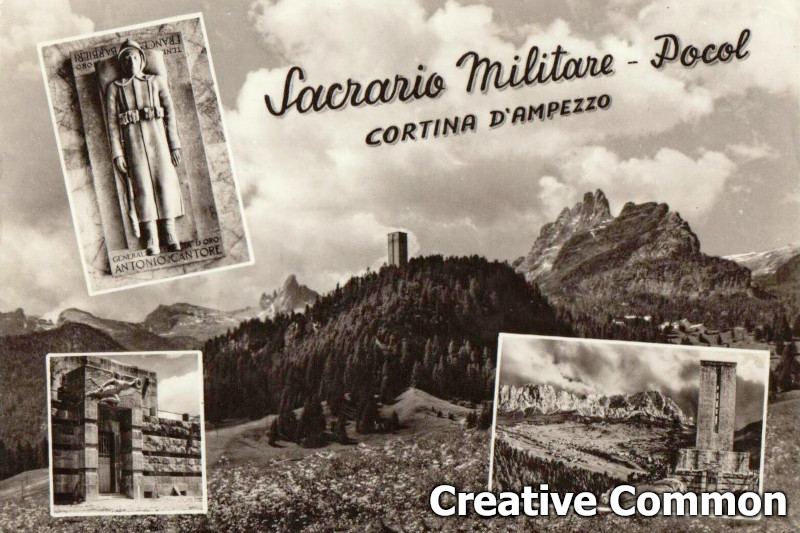
In the same historical period the Fallen War Memorial was built in the locality of Pocol. It is a place where the mortal remains of all the soldiers fallen in the Dolomites are preserved. Before the construction the remains were buried in small war cemeteries. If you would like to learn more about this topic, you can read the page where we describe it in-depth:

It was during this period that Italian took the place of the Ladin language as the main language. Many streets were renamed with more patriotic names, such as "Cesare Battisti" or "Corso Italia." For the people of Cortina it was a hard blow, as they had maintained a strong autonomy throughout all their previous history.
The arrival of World War II slowed tourism in Cortina, which was also invaded again by the Nazis. The Germans sent many young men to war and made it a hospital town, thus preserving it from bombing. The arrival of the Americans led to the liberation of Cortina, which was again annexed to Italy.
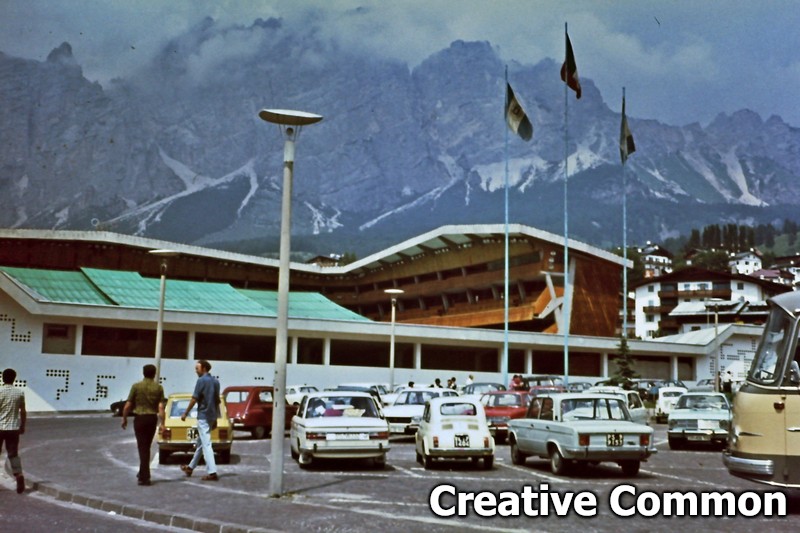
The modern history of Cortina ends with the arrival of the 1956 Olympic games, the first to be broadcast on television. This brought the Pearl of the Dolomites to be internationally known, which it still is today. From that day on, appearances on the screens followed one another, tourism took off and there was an economic boom like never before.
Many buildings that were erected during the Olympics can still be visited, such as the Ice Stadium or the Ski Jump Trampoline Italia, in the district of "Zuel."

The "Regole" of Ampezzo
The "Regole d'Ampezzo", or family communes, are an institution that administers Ampezzo's forests and pastures. It's still active today. They act according to a complex of institutions, laws, customs and habits that have their roots in Cortina's earliest history.
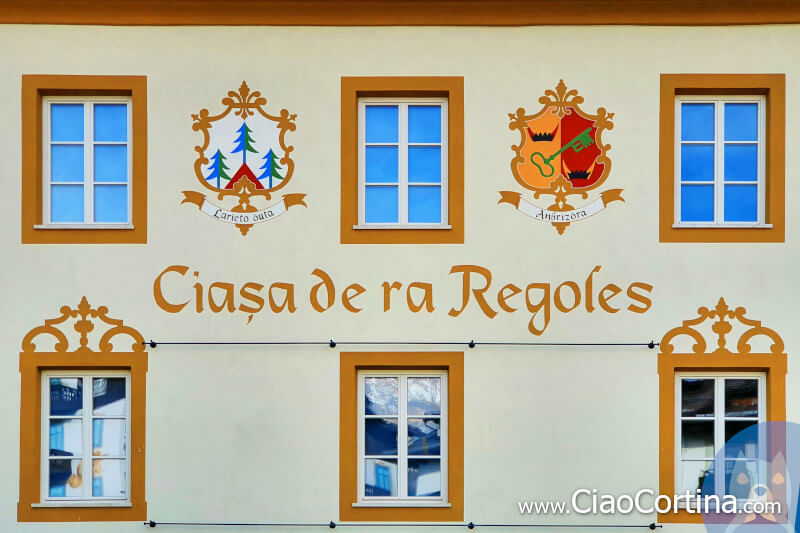
The first written document that formalizes this type of administration dates back to the Cadore Statutes, whose drafting is estimated to be around 1235, but it is supposed that the "Regole" have much earlier origins, around the eighth century after Christ.
... ownership of a forest or pastureland is common among the entitled parties...
In contrast to Roman law, where the owner of a piece of land is the government or the person who bought it, in Cortina, Cadore and Comelico, ownership of a forest or pasture is common among those entitled to it. The eligible are the original residents, and the properties cannot be transferred except by direct line of inheritance. The institution of the "Regole" is recognized by the Italian state through specific laws, which protect its special reality.
The territory is divided into eleven "Regole," specifically: "Alto Lareto," "Bassa di Lareto," "Ambrizola," "Zuel," "Campo," "Pocol," "Rumerlo," "Cadin," "Mandres," and "Fraina." About twenty years ago the different "Regole" were united in commonality.
... the "marigo" work without pay and cannot refuse the position...
Each "Regola" is managed by an administrative manager called "Marigo." By statute, each "Marigo" is elected once a year, they work without pay and cannot refuse the position, except on payment of a fine. The main decisions that the "Marigo" had to make in the past was about the cattle and the pasture, as well as the payment of the shepherds, who were usually salaried. The entity of the "Marigo" still exists today, but their role in society is much more marginal than in the past.
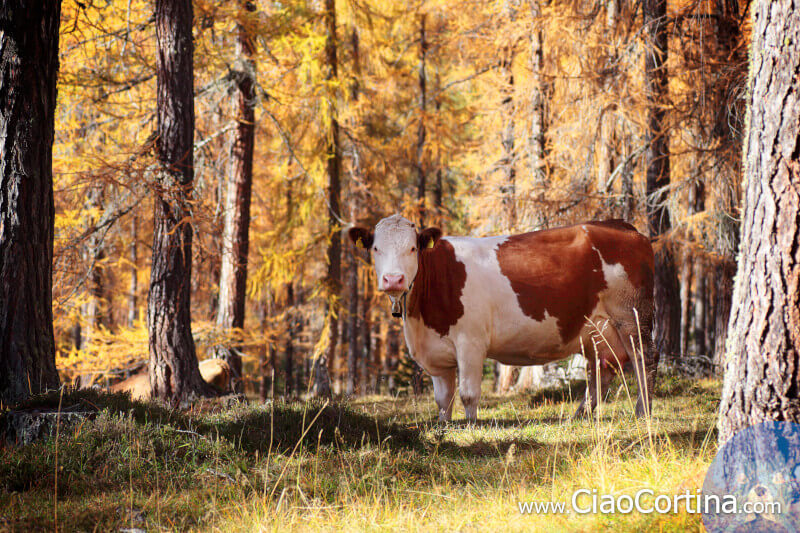
Once a year all the "Regolieri" meet in assembly to discuss the past year and vote on some topics. Initially the meetings were held outdoors, but in 1957 the old school of the village was converted into the "Ciasa de Ra Regoles," the house of the "Regole," where the meetings are held nowadays.
We have already written about it on the page dedicated to the central street of Cortina, "Corso Italia," which you will find below:
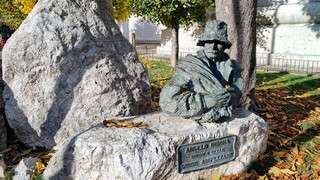
Considering that forests, as mentioned above, are a kind of "common private property," each "Regoliere" is entitled to a share of the wood that comes from cutting them. These are seven cubic meters of wood for each householder, plus one cubic meter for each of its members.
This wood, in the past, was very useful for heating or cooking. Each "Regoliere" can also request construction wood, the best available, but only for his own use, excluding the possibility of trading it.
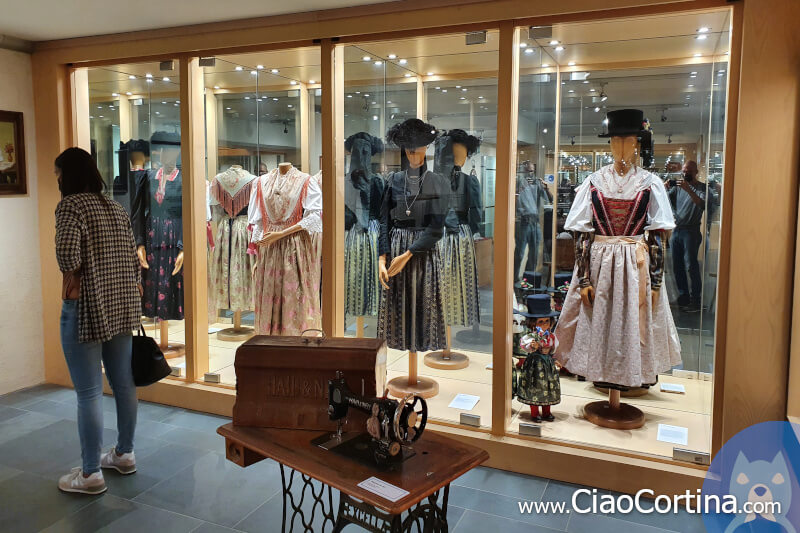
Nowadays the territory owned by the "Regole d'Ampezzo" is about 16,000 hectares and includes large woods of conifers, mainly spruce, larch, silver fir and pine.
Over the centuries, the tasks of this ancient institution have evolved. Today, the "Regole" are mainly occupied with the protection of the territory, the management of the Natural Park of the Ampezzo Dolomites, the renting and allocation of common goods, such as high altitude refuges and pastures, as well as the preservation of Ampezzo culture and traditions. The latter is mainly promoted through the Ampezzo Ethnographic Museum. If this topic interests you, you should read the following page:
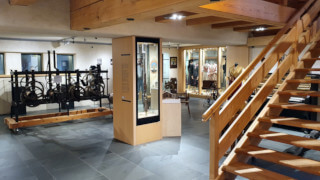
The "Sestieri" of Ampezzo
During the Middle Ages, Ampezzo was part of Cadore, of which it constituted one of its ten "centenae." The "centenae" are administrative subdivisions typical of the Nordic countries, inhabited by about one hundred families. Each "centenae" was commanded by a "Centenarius" and was in turn subdivided into ten "decenas," commanded by ten "Decans."
Around 1500, probably in a spirit of emulation to Venice, the decenas were reduced to six and were called "Sestieri." The "Sestieri" are respectively. "Alverà," "Azon," "Cadin," "Chiave," "Cortina," and "Zuel."
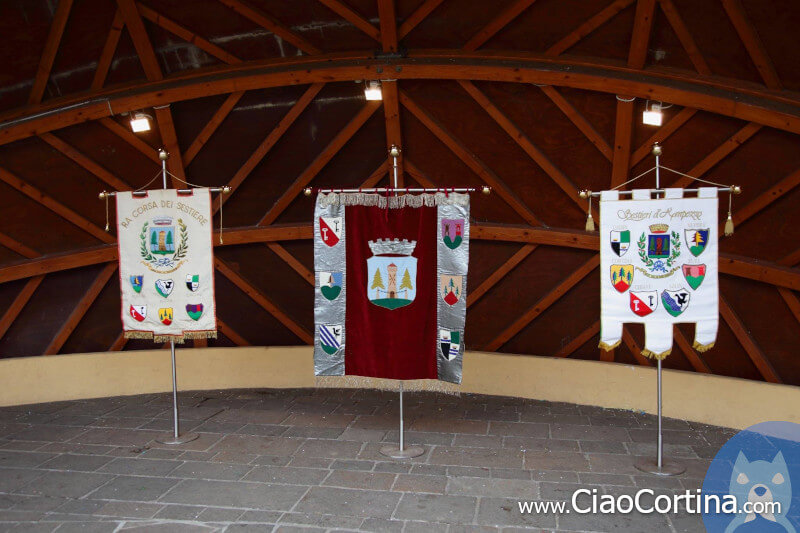
Each Sestiere had a village chief, called "Laudador," who was elected once a year. The main task of the "Laudador" was to organize life inside the villages, maintain order, communicate with the other "Laudadores" and coordinate the activities of the men in case of unforeseen events, such as fires or landslides.
... each Sestiere had a village chief...
Over the years the role of the "Laudadores" has been gradually diminished, until the arrival of the modern era, where the "Sestieri" have become mainly a tradition. The village chiefs have been replaced by the "Presidents of the Sestieri." These are volunteers who organize the activities of the "Sestieri," such as the country festivals of Cortina, which we discussed in depth on the following page:
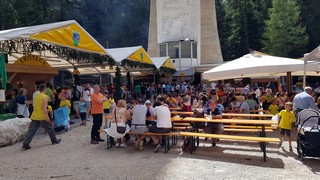
The "Sestieri d'Ampezzo" also organizes other activities. The most interesting, at least from a historical point of view, is the Palio of the "Sestieri." This is a competition where six teams, one for each district, compete in a cross-country skiing relay race.
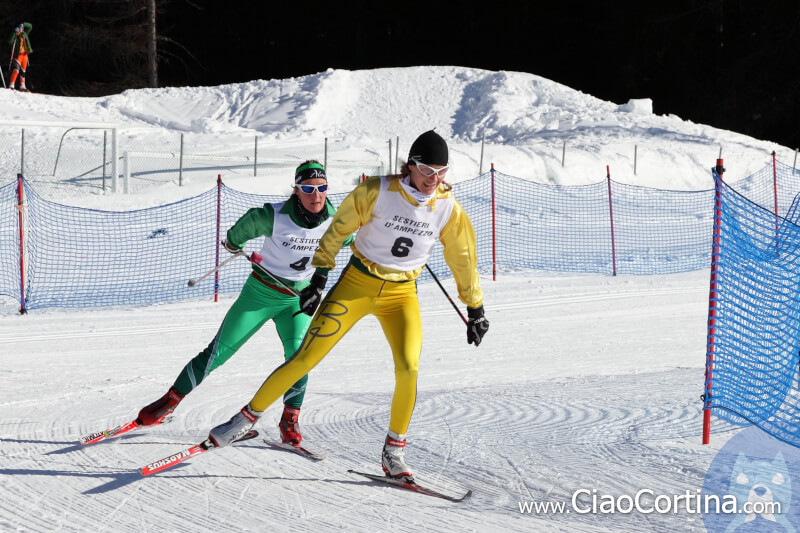
The first edition of the palio was run in 1936 and, since then, all the editions have been held, except those from 1941 to 1945 due to the great war and those of 2021 due to the Covid emergency. If you want to learn more about the activities of the "Sestieri" of Ampezzo, we invite you read the following page:
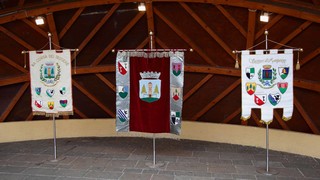

The Grand Council
As mentioned earlier, Cortina was managed by village leaders, one for each "Sestiere," called "Laudador." The duty of these six men became more important in 1508, following the separation from Venice. At that time Ampezzo referred to the Parliament of the town of "Pieve di Cadore" for legal diatribes and its absence, due to the separation, would surely lead to problems in handling disputes.
... Ampezzo referred to the Parliament of Pieve di Cadore...
Initially it was thought that the assembly of the "Regole" could provide a good solution, but the impartiality of such sessions could not be guaranteed. It was decided to organize an independent council, called the Grand Council. This consisted of 24 people, including twelve "Laudadores," the six in charge and the former six, as well as other prominent figures of the country, such as the Captain of the castle of "Podestagno."
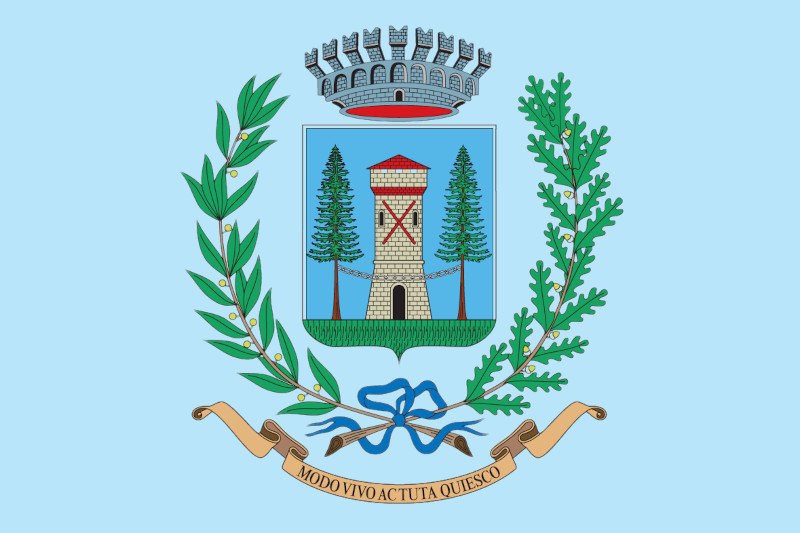
The duties of the Grand Council were related to the management of the land in all its parts. Reading through more than 800 documents of the time, historians have found decisions regarding religion, public education, budgets, justice, defense, agriculture, transportation, roads, and even hunting, including wolf and bear hunting. At that time these predators were present in the valley and were dangerous to the herds more than to the population.
... it has wisely administered the country for centuries...
The importance of the work done by this parliament can still be felt today. It has wisely administered the country for centuries, responsibly managing the proceeds of timber sales, building valuable public buildings, preserving the land from abuse and bringing the town to what it is today.
Cortina is not only a town of great beauty, which has been able to preserve its identity, but it has become, with its splendid bell tower, one of the most iconic images of the good life and mountain holidays.
The fortress of Podestagno
The remains of the Fortress of "Podestagno" are little more than ruins, but in the past this stronghold was crucial to the defense of Cortina, whichever faction decided to conquer it at that particular time in history.
The first document mentioning Podestagno is dated 1175, but probably the castle was there much earlier. The fortress stands on the top of a rocky outcrop near the parking lot to "Malga Ra Stua" and can be easily reached both from the state road or from the former railroad.
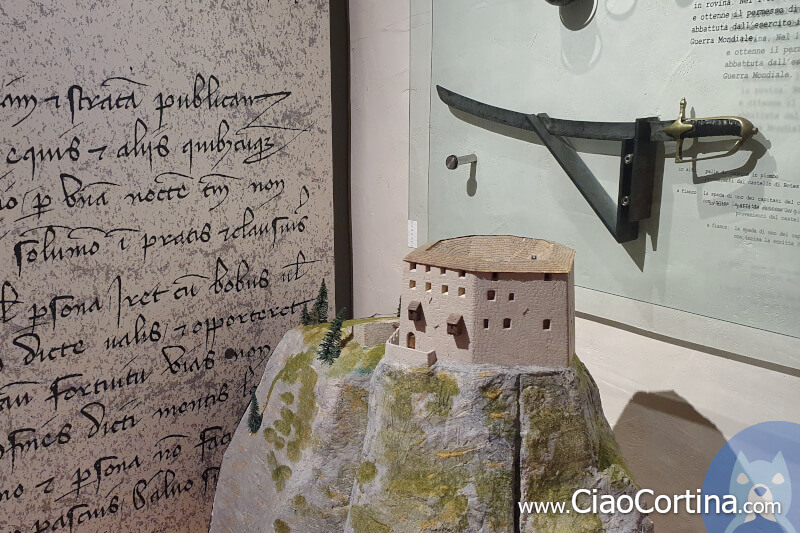
Venice conquered the Ampezzo territories in 1412 and took them out of the hands of the patriarch of Aquileia. After that they needed to conquer the fortress, in order to establish a defensive outpost of the newly conquered lands.
... the only way to obtain the fortress was to put his hand to his wallet...
The task was so much more difficult than they imagined, so much that they had to give up the assault. They had to buy the fortress, and they paid a fortune, because it was almost impregnable. The same happened almost a century later, when Maximilian of Habsburg demanded the surrender of Ampezzo to the Kingdom of Austria. The only way to obtain the fortress was to put his hand to his wallet.
For many centuries the castle ensured the defense of the Ampezzo lands, until the mid 1700, when the improvement of artillery made the existence of the fortress much less important.
In 1908, an American millionaire came to Cortina and, after seeing the castle of "Podestagno," fell in love with it. He decided that he wanted to build his house there at all costs. If you ever visit it, you will see that the view is breathtaking. The council of the "Regole," however, decided that they had no intention of selling the property, because they didn't want to preclude any visitors from seeing the remains of that venerable castle.
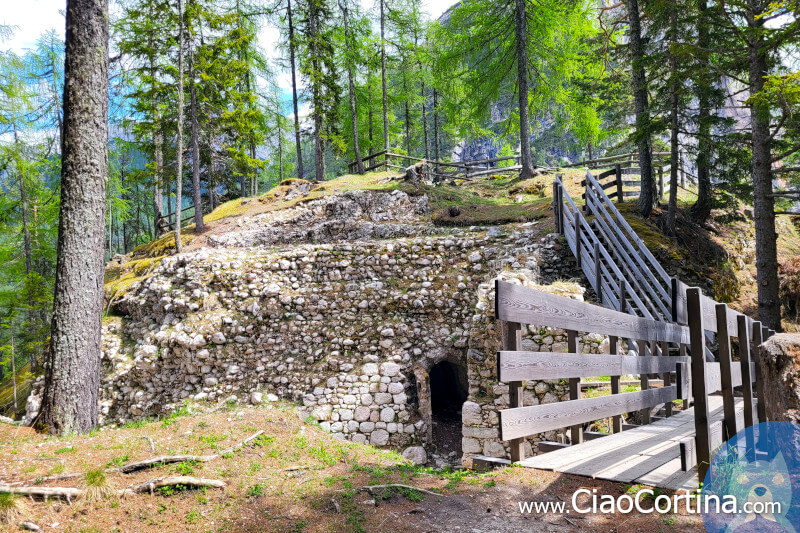
As wisely foreseen by the council the Fortress of "Podestagno," is usually frequented by tourists and residents. In addition to history, visitors can admire a beautiful panorama over the Ampezzo valley.
If you want to know how to visit the ruins of the castle and get some more information, we invite you to read the page dedicated to the hike from "Ra Stua" to the fortress of "Podestagno," which is also known as "Botestagno." You can find it below:
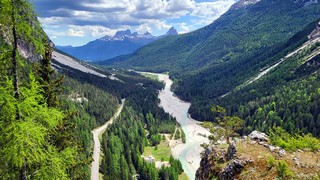

Most important dates
Here you can read the most important dates in the history of Ampezzo. Many dates have been mentioned in the previous chapters, while others have been inserted to give a context. Some of the names described may not say much to the tourists, but they are crucial moments for the history of Cortina and the nearby valleys.
- 6000 B.C. First hunters in Ampezzo.
- 450 B.C. Arrival of the paleo venetians in Veneto.
- 15 B.C. The Romans conquer South Tyrol.
- 769 Foundation of San Candido (BZ).
- 1077 Cadore and Ampezzo under the patriarch of Aquileia.
- 1156 First document mentioning Ampezzo.
- 1203 The church of Ampezzo is documented.
- 1225 First mention of the "Regole" and the church of Ospitale.
- 1235 First statutes of Cadore.
- 1355 Building of S. Caterina church, now demolished.
- 1420 Cadore and Ampezzo under Venice.
- 1482 Consecration of the church of the "Difesa."
- 1508 First Austrian occupation of Ampezzo.
- 1595 Built the church of Zuel.
- 1619 The Fortress of "Podestagno" was rebuilt.
- 1753 The wall on the Giau was erected.
- 1775 Finished the new parish church.
- 1794 The Fortress of "Podestagno" was demolished.
- 1810 Ampezzo to the Napoleonic kingdom of Italy.
- 1813 Ampezzo returns to Austria.
- 1832 Inauguration of state road of Alemagna.
- 1841 A landslide from Faloria destroys "Pecol."
- 1858 The new bell tower of Cortina was completed.
- 1863 Climbed by Paul Grohmann Mount Tofana and Mount Antelao.
- 1883 The first alpine refuge in Cortina, the Nuvolao.
- 1893 The Cooperativa of Cortina was founded.
- 1903 The Cortina Ski Club was founded.
- 1915 Cortina was occupied by Italian troops.
- 1923 Ampezzo joined the province of Belluno.
- 1943 Cortina was occupied by the Germans.
- 1945 The Americans in Cortina.
- 1947 Cortina was confirmed in Belluno.
- 1956 The Olympic Games in Cortina.
- 1962 Inauguration of the Calalzo-Cortina railway.
- 1963 The film The Pink Panther was shot in Cortina.
- 1981 007 For your eyes only, filmed in Cortina, was released in the cinema.
- 2007 Referendum for the transition to the province of Bolzano.
- 2021 Alpine Ski World Championships.
- 2026 2026 Winter Olympics.
Curiosity and thanks
Before concluding, we would like to leave you with a curiosity. Many wonder where the name Ampezzo comes from. Although there is no clear origin, local scholars and linguists agree that it derives from the Latin amplus, which means open, large place. The suffix Cortina, instead, could derive from "small court". In Italian it would be "piccola corte," but you could also make up the word "Cortina". Another possibility is due to the curtain that surrounded the cemetery, in Italian called "cortina."
For the drafting of this article, the scholar and writer Mario Ferruccio Belli was fundamental. He gave us, as a gift, an autographed copy of his book History of Cortina d'Ampezzo, it has allowed us to become passionate about the subject, providing the essential foundations for the creation of this page.
The information contained was integrated with texts by other authors, such as History of Cortina by Giuseppe Richebuono and other material, such as the calendars of the Cooperativa di Cortina or the websites of the Municipality of Cortina and the "Regole d'Ampezzo."

Conclusion
We hope you liked this page on the history of Cortina d'Ampezzo. Before saying goodbye, we would suggest you read our home page, with all the articles we wrote about Cortina d'Ampezzo.
If you want to thank us you can read the page Support us. If you only want to suggest a change, propose something or just say hello, in the section contacts and info you'll find all the ways to reach us.